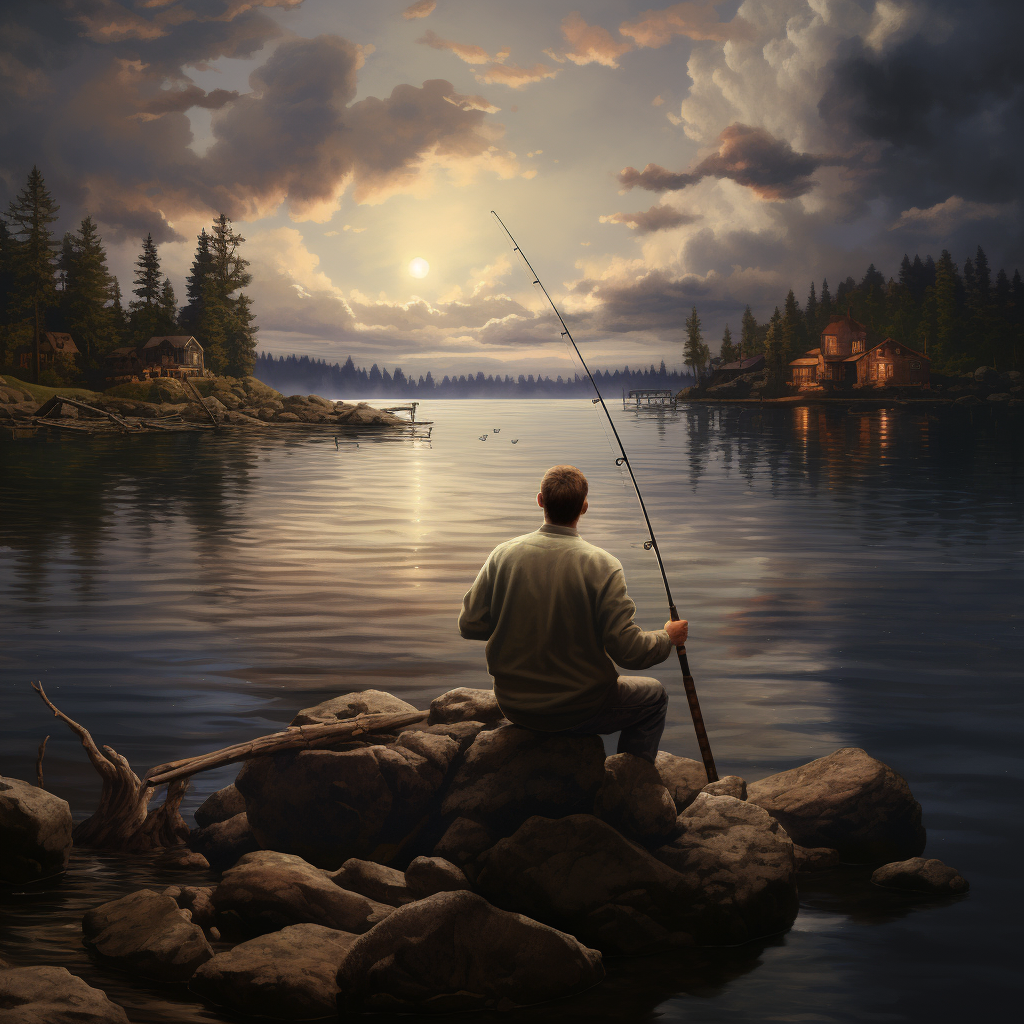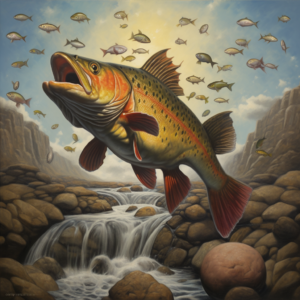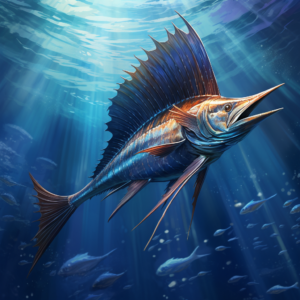Welcome to the exciting world of surf casting! If you’re looking to catch some big fish from the shoreline, then you’re in the right place. In this section, we’ll introduce you to the basics of surf casting and provide an overview of the tips and techniques you need to become a successful shore fisherman.
First and foremost, you’ll need the right gear. We’ll cover the essential surf fishing gear, including the best surf casting rods and surf casting reels. We’ll also give you a rundown of the different surf casting techniques and knots you’ll need to master.
Location is key when it comes to surf casting, so we’ll discuss how to find the best surf fishing spots. From reading tides to understanding currents, we’ll help you identify productive areas along the shoreline.
Of course, even with the best gear and techniques, surf casting can come with its fair share of challenges. We’ll cover common obstacles you may encounter, such as windy conditions, tide changes, and equipment maintenance, and provide tips on how to overcome them.
Lastly, we’ll give you a range of effective surf fishing tips to help you improve your catch rate, including selecting the right bait and adjusting your techniques based on weather conditions.
Ready to get started on your surf casting journey? Let’s dive in!
Understanding Surf Casting
Before you hit the shoreline, it’s essential to understand the basics of surf casting. This type of fishing requires a unique set of casting techniques, so it’s essential to be familiar with the various methods you can use to make a successful catch.
Casting Techniques
Surf casting requires a different approach to casting than other types of fishing, such as freshwater or boat fishing. One of the most common techniques used is the overhead cast, where you swing the rod back and forth before casting the line forward. Another popular technique is the sidearm cast, which is useful when there’s wind blowing in your face. It involves keeping the rod parallel to the ground and casting the line out at a low angle. Mastering these different casting techniques will help you catch more fish and maximize your casting distance and accuracy.
Equipment and Gear
Surf casting requires specialized gear to tackle the hard-fighting fish that you’ll encounter in saltwater. As you’ll be casting from the shore, you’ll need a longer and heavier rod than you would need for freshwater fishing. A good surf casting rod will be between 9 and 15 feet in length and have a sturdy butt section. The reel you choose should also be durable and capable of holding a lot of line. Look for a high-capacity reel that can handle at least 200 yards of line.
When it comes to line, use a braided line for better sensitivity and casting distance. Monofilament line is also a good choice for beginners as it’s easier to handle and more forgiving. Don’t forget to invest in quality terminal tackle, such as hooks, swivels, and sinkers.
Now that you’re familiar with the basics of surf casting, it’s time to gear up and get on the shoreline. Practice your casting techniques and experiment with different baits and lures until you find what works best for you. Happy fishing!
Essential Surf Fishing Gear
When it comes to surf casting, having the right gear is essential. Here are some of the most important pieces of surf fishing gear you’ll need:
Surf Casting Rods
The best surf casting rods are typically long and sturdy, ranging from 10 to 15 feet in length. Look for a rod with a fast action and a heavy power rating to handle large fish and strong currents. Graphite or composite materials are preferred due to their strength and sensitivity.
Surf Casting Reels
Surf casting reels should have a high line capacity to handle long casts and strong fish. Look for reels with a durable construction and corrosion-resistant materials to withstand the harsh saltwater environment. A smooth drag system and a high gear ratio will also make retrieving your line easier.
Other Essential Gear
In addition to a quality surf casting rod and reel, you’ll also need other essential gear such as a fishing line, a variety of lures and live bait, a tackle box, and a surf fishing cart or wagon to carry all your gear to and from the beach.
Investing in high-quality surf fishing gear is a must if you want to enjoy a successful and stress-free fishing experience. Consider purchasing gear from reputable manufacturers and retailers and always take proper care of your equipment to ensure it lasts for years to come.
Mastering Surf Casting Techniques
As a surf caster, the ability to cast long distances with accuracy is crucial. Different surf casting techniques can be used to achieve this goal. Some of the most common techniques include overhead casting, sidearm casting, and two-handed spey casting.
Overhead casting is the most common technique used in surf fishing. To execute this technique, stand with your feet shoulder-width apart, hold the rod with both hands, and bring it behind your head. Cast the line forward, using a fluid motion, and release the line at the peak of your cast to achieve maximum distance.
Sidearm casting is another popular technique used when the wind is blowing towards you. Hold the rod with one hand, and bring it back behind you. Swing the rod forward using a sidearm motion, and release the line at the peak of your cast.
“Remember to keep your wrist loose and focus on your timing to achieve the best results with either of these techniques,” says experienced surf caster, John Smith.
One of the most important aspects of surf casting is using the right knots to secure your line. There are several knots that surf casters use, including the improved clinch knot, the Palomar knot, and the uni knot.
The improved clinch knot is a classic and reliable knot that is easy to tie. To tie this knot, insert the line through the hook eye, wrap it around the standing line 5-7 times, and then pass the tag end back through the loop you created behind the hook eye. Finally, moisten the knot and pull the tag end to tighten it.
The Palomar knot is a strong and versatile knot that is great for attaching hooks and lures to your line. To tie this knot, fold the line in half and pass it through the hook eye. Tie an overhand knot with the doubled line, then pass the hook or lure through the loop you created. Finally, moisten the knot and pull both ends of the line to tighten it.
The uni knot is another strong and easy-to-tie knot that is perfect for securing your line to your rig or leader. To tie this knot, pass the line through the hook eye or swivel, and tie a loose overhand knot. Bring the tag end back through the overhand knot and wrap it around the standing line 5-7 times. Finally, pass the tag end back through the overhand knot and pull both ends of the line to tighten it.
With the right techniques and knots in your arsenal, you’ll be able to maximize your casting distance and accuracy, and secure your line to prevent losing any fish.
Finding the Best Surf Fishing Spots
As a surf caster, finding the right fishing spot is crucial to your success. The ocean offers a vast expanse of water and shoreline, so it’s important to know how to identify the most productive areas. Here are some tips for finding the best surf fishing spots:
1. Look for structure: Fish love structure, such as jetties, rock formations, and sandbars. These areas provide shelter and food for baitfish, which in turn attract larger game fish.
2. Follow the bird activity: Seagulls and other sea birds can provide clues to where baitfish are congregating. Keep an eye out for flocks of birds diving into the water, as this could indicate a feeding frenzy.
3. Read the tides: Understanding the tides is essential to finding the best surf fishing spots. Look for areas where the tide is moving, as this creates a natural current that can bring in baitfish and game fish.
4. Check the wind direction: Wind can have a significant impact on where fish are feeding. Look for areas where the wind is blowing into shore, as this creates a natural current that can bring in baitfish and game fish.
Remember that different species of fish prefer different types of habitat, so it’s important to do your research. Whether you’re targeting striped bass, bluefish, or flounder, make sure to find out the specific types of surf fishing spots they prefer. By applying these tips, you’ll be well on your way to finding the best surf fishing spots and increasing your chances of a successful catch.
Effective Surf Fishing Tips
Catching fish from the shore isn’t always easy, but with the right surf fishing tips, you can increase your chances of success. Here are some tips to help you make the most of your surf casting experience:
“Always adjust to the conditions. Experiment with different lures, baits, and techniques until you find what works best for the current weather and tide conditions.”
When it comes to surf casting, the type of bait can make all the difference. Consider using fresh bait instead of frozen, or even try using artificial lures like jigs or plugs. Keep in mind that different types of bait are more effective for different types of fish, so do some research before hitting the shoreline.
Pro tip: If you’re fishing for striped bass, try using live eels or fresh chunks of bunker for the best results.
“Pay attention to the water movement. Fish tend to face into the current, so casting parallel to the shoreline can be a great way to cover more area and locate fish.”
Another important surf fishing tip is to pay attention to the movement of the water. Look for areas of high tide or where waves are breaking over sandbars, as these can be great spots to find fish. Additionally, try to avoid casting directly into the waves, as this can result in lost bait or tangles. Instead, cast parallel to the shoreline and let your bait drift with the current.
Pro tip: If you’re fishing for surfperch, look for sandy areas with small dips and troughs, as these fish like to feed in these spots.
“Be patient and stay alert. Fishing can be unpredictable, so don’t give up if you don’t get a bite right away. Keep an eye on your line and be ready to set the hook at any moment.”
Finally, one of the most important surf fishing tips is to stay patient and alert. Fishing can often be a waiting game, so be prepared to spend some time on the shoreline. Keep an eye on your line at all times, as fish can strike at any moment. When you do get a bite, be ready to set the hook quickly and reel in your catch.
Pro tip: Don’t be afraid to ask other fishermen in the area for tips or advice. The surf fishing community is often happy to share their knowledge with others.
Common Challenges in Surf Casting
Despite the excitement that comes with surf casting, there are several obstacles that can make it a challenging experience. However, with the right knowledge and equipment, you can overcome these challenges with ease. Here are a few common challenges you may face when surf casting and how to deal with them:
Windy Conditions
Windy conditions can make casting difficult and can even cause tangles in your line. To overcome this challenge, make sure you have a surf fishing rod that’s heavy enough to cast well in windy conditions. You can also try using a shorter leader and a heavier sinker to keep your line stable.
Changing Tides
Tides are constantly changing, and this can affect your surf casting success. It’s important to understand the tides and how they affect the fish you’re targeting. The best time to fish is usually during the incoming tide when the water is moving towards the shore. During the outgoing tide, fish tend to move out to deeper waters.
Equipment Maintenance
Having the right surf fishing gear is essential, but it’s also important to properly maintain your equipment. Saltwater can be harsh on gear, so make sure you rinse your rod, reel, and other equipment with fresh water after each use. This will help prevent corrosion and prolong the life of your equipment.
Overcoming the challenges that come with surf casting requires patience, experience, and the right equipment. With these tips, you can improve your chances of a successful fishing trip and enjoy all the rewards that surf fishing has to offer.
Conclusion
Surf casting is an exciting and rewarding form of fishing that requires skill, patience, and the right gear. By mastering techniques like knot tying and casting, understanding the principles of surf fishing, and identifying the best fishing spots, you can increase your chances of success and enjoy a memorable day by the shore.
Remember that successful surf casting takes time and practice, and that persistence is key. No matter if you encounter windy conditions or changing tides, stay focused and adaptable, and you’ll be able to overcome any challenge that comes your way.
So grab your surf casting gear, head to the shoreline, and let the thrill of the catch take over. With these tips and tricks, you’ll be on your way to becoming a skilled surf caster in no time. Happy fishing!
FAQ
Q: What is surf casting?
A: Surf casting is a fishing technique that involves casting a baited fishing line into the ocean from the shoreline.
Q: What kind of gear do I need for surf casting?
A: To surf cast effectively, you will need a surf casting rod, a surf casting reel, a fishing line, weights, hooks, and bait.
Q: What are some popular surf casting techniques?
A: Some popular surf casting techniques include overhead casting, pendulum casting, and off-the-ground casting.
Q: How do I choose the best surf casting rod?
A: When choosing a surf casting rod, consider factors such as length, power, and action to ensure it matches your fishing style and target species.
Q: What are some essential surf casting knots?
A: Some essential surf casting knots include the uni knot, improved clinch knot, and palomar knot. These knots are used to secure hooks, swivels, and other tackle to the fishing line.
Q: How do I identify the best surf fishing spots?
A: Look for areas with natural structures such as jetties, sandbars, and cuts where fish tend to gather. Additionally, pay attention to tide movements and currents, as they can indicate productive areas.
Q: What are some effective surf fishing tips?
A: Some effective surf fishing tips include using fresh bait, adjusting your techniques based on weather conditions, and casting beyond the breaking waves to reach deeper water where fish may be feeding.
Q: What are common challenges in surf casting?
A: Common challenges in surf casting include dealing with windy conditions, adjusting to tide changes, and ensuring your fishing gear is properly maintained.




